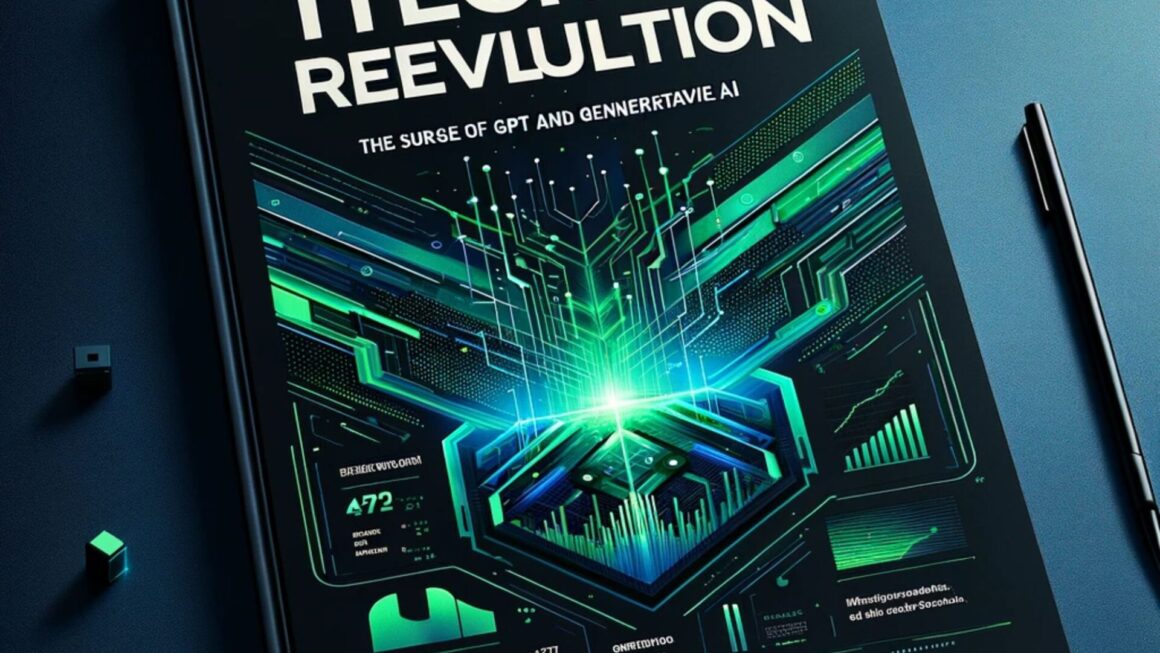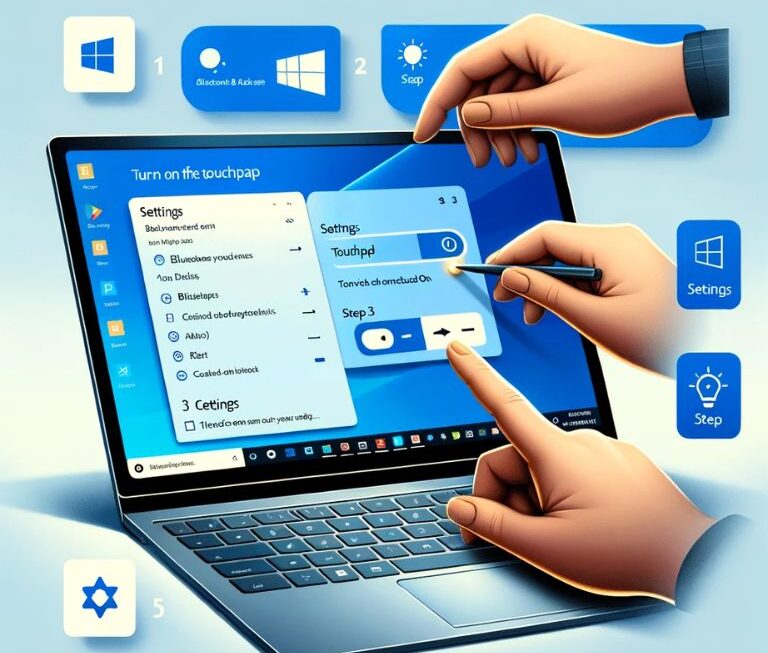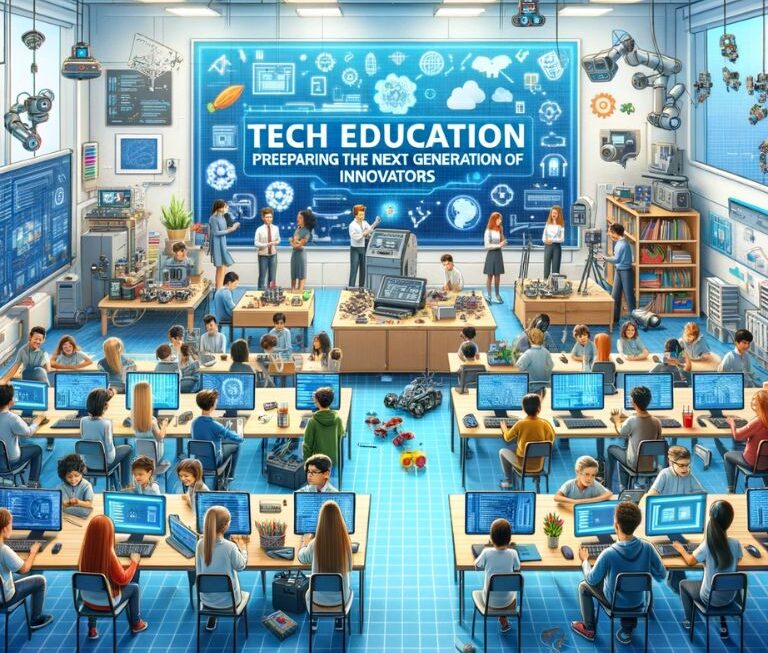Silicon Valley, a region synonymous with cutting-edge technology and innovation, continues to be the global epicenter of technological advancements. As we move into 2023, the Valley remains a powerhouse of creativity, entrepreneurial spirit, and technological breakthroughs. This dynamic ecosystem is not just a geographical location; it’s a cultural phenomenon that influences global tech trends and sets the pace for future developments.
A Hub of Technological Ingenuity
At its core, Silicon Valley is home to an array of tech giants, burgeoning startups, and venture capitalists, all of which contribute to a vibrant culture of innovation. Companies ranging from established players like Apple and Google to emerging startups are constantly pushing the boundaries of what’s possible, driven by a shared ambition to revolutionize various aspects of our lives.
The Role of Venture Capital and Startups
Venture capital plays a pivotal role in Silicon Valley’s ecosystem, fueling the growth of startups that are often at the forefront of breakthrough technologies. These startups are not just focusing on incremental improvements; they are aiming to disrupt industries and create entirely new markets. The symbiotic relationship between venture capitalists and startups ensures a continuous flow of ideas and capital, driving innovation at an unprecedented pace.
A Melting Pot of Talent and Ideas
Silicon Valley’s strength lies in its diverse and talented workforce. The region attracts some of the brightest minds from across the globe, fostering a melting pot of ideas, cultures, and perspectives. This diversity is a key ingredient in the Valley’s success, as it leads to novel solutions and approaches to problem-solving.
Leading Trends in Silicon Valley
As we delve into 2023, several key trends are shaping the technological landscape of Silicon Valley:
- Artificial Intelligence and Machine Learning: AI and ML continue to be at the forefront of innovation, with applications ranging from predictive analytics to autonomous systems.
- Cybersecurity: In an increasingly digital world, cybersecurity remains a top priority, with new solutions emerging to protect against sophisticated cyber threats.
- Internet of Things (IoT): The expansion of IoT is transforming how we interact with devices, leading to smarter and more connected environments.
- Blockchain Technology: Beyond cryptocurrencies, blockchain is finding applications in areas like supply chain management and digital identity verification.
- Edge Computing: As data generation grows exponentially, edge computing offers a solution for faster and more efficient data processing.
- Robotics and Automation: Robotics are becoming increasingly sophisticated, finding use in industries from manufacturing to healthcare.
Artificial Intelligence and Machine Learning Breakthroughs

The domain of Artificial Intelligence (AI) and Machine Learning (ML) in Silicon Valley has witnessed phenomenal growth, revolutionizing various industries with innovative applications. In 2023, these technologies have become more than just buzzwords; they are integral components of the digital transformation shaping our world.
AI and ML: A Paradigm Shift in Technology
AI and ML technologies are now deeply embedded in the fabric of both consumer and enterprise applications. They enhance user experiences in mobile apps and drive complex decision-making processes in large corporations. The advancements in AI and ML represent a paradigm shift in how machines interact with and process information.
Key Areas of AI and ML Innovation
Predictive Analytics in AI and ML leverages historical data to predict future outcomes, finding applications in finance, healthcare, and marketing. Natural Language Processing (NLP) has led to more intuitive and human-like interactions between computers and humans. In the realm of Autonomous Systems, AI and ML are crucial for developing self-driving cars and drones that can operate independently and safely. The personalization of user experiences in e-commerce, content streaming, and digital marketing is driven by Personalization Algorithms using AI. Additionally, AI and ML play a critical role in Healthcare Diagnostics by diagnosing diseases, predicting patient outcomes, and personalizing treatments.
The Impact of AI and ML in Various Sectors
The impact of AI and ML is widespread across several industries. In Healthcare, AI-driven diagnostic tools and personalized treatment plans are leading to more effective outcomes. The Finance sector is transformed through algorithmic trading, fraud detection, and personalized banking services. AI in Retail aids in inventory management, customer behavior analysis, and enhancing the shopping experience. In Manufacturing, AI and ML are utilized for predictive maintenance, supply chain optimization, and quality control.
The Rising Importance of Cybersecurity
In the rapidly evolving digital landscape of Silicon Valley, the significance of cybersecurity has escalated dramatically. As technology permeates every aspect of personal and corporate life, protecting digital assets and information has become paramount. In 2023, cybersecurity is not just a concern for IT departments; it’s a critical business imperative.
Cybersecurity: A Crucial Pillar in the Digital Era
The surge in digital transformation has led to an increased reliance on cloud-based services, IoT devices, and remote working environments. This shift has expanded the attack surface for cyber threats, making robust cybersecurity measures essential. Silicon Valley, being at the forefront of technological innovation, is also at the forefront of developing advanced cybersecurity solutions.
Key Focus Areas in Cybersecurity
- Data Protection: With the increasing volume of data generated, safeguarding sensitive information is crucial. Encryption, secure data storage, and access controls are some of the methods employed.
- Threat Intelligence: Proactive threat intelligence gathering and analysis are vital for predicting and mitigating potential cyber attacks.
- Network Security: As networks become more complex, securing network infrastructure against unauthorized access and attacks is a top priority.
- Cloud Security: With the growing adoption of cloud computing, ensuring the security of data and applications in the cloud is essential.
- End-User Education: Educating end-users about safe online practices is critical for preventing security breaches.
Recent Trends and Innovations in Cybersecurity
- AI-Driven Security: AI and ML are being leveraged for threat detection and response, providing faster and more accurate identification of potential threats.
- Blockchain for Security: Blockchain technology is being explored for its potential in creating secure, tamper-proof systems.
- Zero Trust Architecture: The adoption of a zero trust security model, where trust is never assumed and verification is required from everyone trying to access resources in the network, is on the rise.
- Quantum Computing and Cybersecurity: As quantum computing evolves, it poses new challenges and opportunities for cybersecurity, necessitating the development of quantum-resistant cryptographic algorithms.
Internet of Things (IoT): A Connected Future

As we venture deeper into 2023, Silicon Valley continues to spearhead the rapid expansion of the Internet of Things (IoT), reshaping our interaction with the world through a network of interconnected devices. This evolution is not just about connecting objects to the internet but embedding intelligence to create smart, responsive environments across various sectors.
The Evolution of IoT in Silicon Valley
IoT’s role in Silicon Valley transcends mere connectivity, embedding intelligence in devices to foster smart, responsive environments. From smart homes and cities to advanced manufacturing and healthcare systems, IoT’s applications are diverse and impactful.
Key Developments in IoT
In Smart Home Devices, we see an increasing popularity of gadgets like smart thermostats, lights, and security systems, enhancing convenience and energy efficiency. The realm of Wearable Technology has grown with devices like fitness trackers and smartwatches, providing health and activity insights. Industrial IoT (IIoT) is revolutionizing operations in sectors like manufacturing with predictive maintenance and optimized resource management. In healthcare, IoT devices are increasingly used for remote patient monitoring, significantly improving healthcare accessibility and quality.
The Impact of IoT on Society and Industry
IoT’s transformative impact is evident across various sectors. For consumers, it simplifies daily tasks and personalizes experiences. In industries like manufacturing and logistics, IoT drives operational efficiency, cost reduction, and safety improvements.
Blockchain Beyond Cryptocurrencies
In Silicon Valley, blockchain technology has transcended its initial association with cryptocurrencies, emerging in 2023 as a foundational technology that offers a secure, transparent, and efficient way to record and transfer data. This evolution reflects blockchain’s core characteristics: decentralization, immutability, and transparency, which have propelled its adoption in various fields.
The Broadening Scope of Blockchain
Blockchain’s expansion in Silicon Valley is marked by its versatility across different sectors. Originally pivotal for digital currencies, it now finds innovative applications in fields ranging from supply chain management to healthcare.
Key Applications of Blockchain
In Supply Chain Management, blockchain is enhancing transparency and efficiency, enabling tracking from production to delivery and ensuring product authenticity. The technology’s application in Digital Identity Verification provides a secure way to manage digital identities with a unified, tamper-proof record. In the realm of Decentralized Finance (DeFi), blockchain is central to democratizing finance by eliminating intermediaries in financial transactions. The use of Smart Contracts in blockchain is automating business processes, embedding self-executing contracts with terms directly in code. In Healthcare Data Management, blockchain’s role in securely storing and sharing patient records is improving data accuracy and privacy.
Impact and Advancements
Blockchain’s impact is extensive and varied. It enhances traceability in supply chains, reduces fraud, and minimizes errors. Digital identity verification on blockchain platforms offers secure alternatives to traditional methods, combating identity theft and fraud. In finance, DeFi challenges traditional banking with more accessible services. Smart contracts are revolutionizing business agreements, increasing efficiency and reducing intermediaries. In healthcare, blockchain secures medical records, enhancing privacy and trust.
Edge Computing: The New Frontier in Data Processing
As 2023 progresses, Edge Computing has solidified its position as a pivotal technological trend in Silicon Valley, marking a paradigm shift in data processing. This shift is primarily driven by the need for more efficient processing of the enormous volumes of data generated by IoT devices and other digital sources.
The Essence of Edge Computing
Edge Computing is characterized by data processing close to the data source rather than relying on distant, centralized data-processing warehouses. This proximity reduces latency and bandwidth usage, making data processing more efficient and faster, which is particularly vital for real-time applications.
Key Developments in Edge Computing
Reduced Latency in Edge Computing significantly diminishes the delay in data transmission, a critical aspect for applications requiring immediate responses, such as autonomous vehicles and real-time analytics. The approach also optimizes Bandwidth, reducing the load on networks by decreasing the need for long-distance data transmission. Additionally, Edge Computing can enhance Security by limiting the amount of data transferred over the internet, thus reducing exposure to potential breaches. It also offers Scalability and Flexibility, allowing for the adaptable deployment of applications in response to varying demands.
Robotics: Shaping a New Era of Automation
In 2023, Silicon Valley continues to be at the forefront of robotics innovation, pushing the boundaries of what’s possible in automation. Robotics technology, once a realm of science fiction, is now a tangible reality impacting various sectors, from manufacturing to healthcare, with profound implications for the future of work and daily life.
The Advancement of Robotics in Silicon Valley
Silicon Valley’s contribution to robotics has been marked by significant advancements in AI, machine learning, and sensor technology. These developments have enabled robots to perform complex tasks with greater precision and autonomy.
Key Developments in Robotics
- Industrial Automation: Robotics in manufacturing has transformed production lines, making them more efficient and less prone to errors.
- Healthcare Robotics: From surgical assistants to rehabilitation robots, robotics in healthcare is enhancing patient care and treatment outcomes.
- Service Robots: These robots are being used in customer service, hospitality, and domestic chores, providing convenience and efficiency.
- Agricultural Robots: Robotics technology is revolutionizing agriculture, aiding in planting, harvesting, and monitoring crops.
- Autonomous Vehicles: The development of self-driving cars and drones is a significant area of robotics, with potential to reshape transportation.
The Impact of Robotics Across Sectors
Robotics is revolutionizing industries by automating tasks, improving accuracy, and reducing labor costs. In manufacturing, robots are streamlining production processes. In healthcare, they assist in surgeries and patient rehabilitation, enhancing the precision and effectiveness of treatments. Service robots are becoming more prevalent in customer service and domestic tasks, while agricultural robots are increasing efficiency in farming practices. Autonomous vehicles, including drones and self-driving cars, are set to transform the transportation sector.
Conclusion
As we review Silicon Valley’s technological landscape in 2023, it is evident that the region remains a powerhouse of innovation. The advancements in AI, machine learning, blockchain, edge computing, and robotics highlight its pivotal role in shaping modern technology. These developments are interconnected, each feeding into and enhancing the others, showcasing the dynamic nature of Silicon Valley’s tech ecosystem.
Silicon Valley’s influence extends beyond its geographical boundaries, impacting global economic trends, societal norms, and policy frameworks. The region faces challenges, including data privacy and cybersecurity, and its response to these issues will significantly influence the global tech landscape.
Looking ahead, Silicon Valley continues to be the epicenter of technological innovation, setting the stage for future developments and guiding the global trajectory of tech advancements. Its ongoing legacy is a testament to the relentless pursuit of innovation and a future shaped by these groundbreaking technologies.



